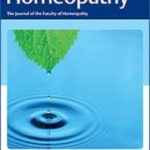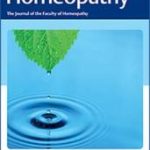Bioresilience to Mercury Chloride of the Brine Shrimp Artemia Salina after Treatment with Homeopathic Mercurius Corrosivus

Introduction - Finding solutions to mitigate the impact of pollution on living systems is a matter of great interest. Homeopathic preparations of toxic substances have been described in the literature as attenuation factors for intoxication. Herein, an experimental study using Artemia salina and mercury chloride was developed as a model to identify aspects related to bioresilience. Aims - The aim of the study was to describe the effects of homeopathic Mercurius corrosivus (MC) on Artemia salina cysts hatching and on mercury bioavailability. Methods - Artemia salina cysts were exposed to 5.0 µg/mL of mercury chloride during the hatching phase. MC potencies (6cH, 30cH, and 200cH) were prepared in sterile purified water and poured into artificial sea water. Different controls were used (non-challenged cysts and challenged cysts treated with water, succussed water, and Ethilicum 1cH). Four series of nine experiments were performed to evaluate the percentage of cyst hatching. Soluble total mercury (THg) levels and precipitated mercury content were also evaluated. Solvatochromic dyes were used to check for eventual physicochemical markers of MC biological activity. Results - Significant delay (p < 0.0001) in cyst hatching was observed only after treatment with MC 30cH, compared with controls. This result was associated with an increase of THg concentration in water (p = 0.0018) and of chlorine/oxygen ratio (p < 0.0001) in suspended micraggregates, suggesting changes in mercury bioavailability. A specific interaction of MC 30cH with the solvatochromic dye ET33 (p = 0.0017) was found. Conclusion - Changes in hatching rate and possible changes in Hg bioavailability are postulated as protective effects of MC 30cH on Artemia salina, by improving its natural bioresilience processes.






Lascia un commento
Devi essere connesso per inviare un commento.